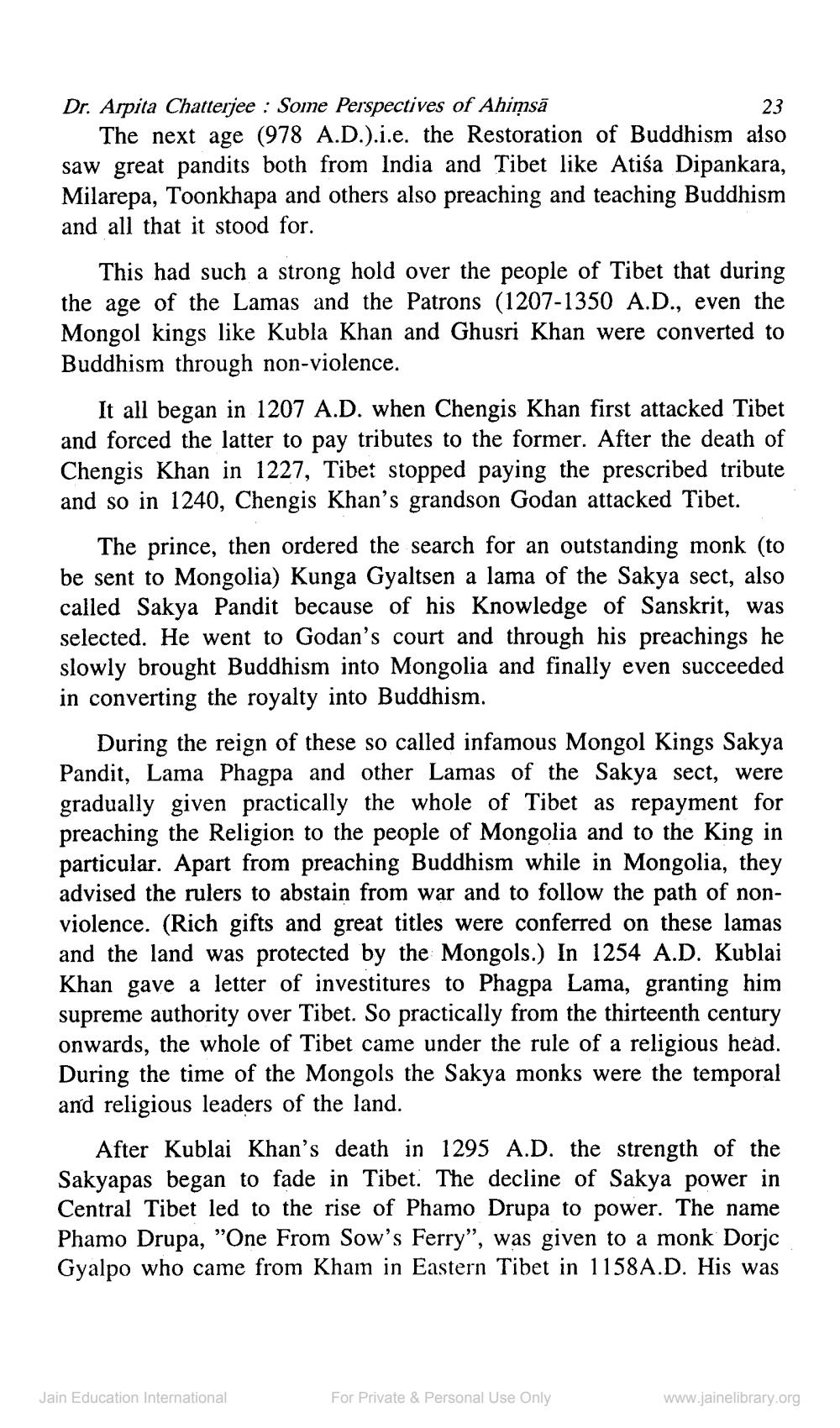________________
Dr. Arpita Chatterjee : Some Perspectives of Ahimsa
23
The next age (978 A.D.).i.e. the Restoration of Buddhism also saw great pandits both from India and Tibet like Atiśa Dipankara, Milarepa, Toonkhapa and others also preaching and teaching Buddhism and all that it stood for.
This had such a strong hold over the people of Tibet that during the age of the Lamas and the Patrons (1207-1350 A.D., even the Mongol kings like Kubla Khan and Ghusri Khan were converted to Buddhism through non-violence.
It all began in 1207 A.D. when Chengis Khan first attacked Tibet and forced the latter to pay tributes to the former. After the death of Chengis Khan in 1227, Tibet stopped paying the prescribed tribute and so in 1240, Chengis Khan's grandson Godan attacked Tibet.
The prince, then ordered the search for an outstanding monk (to be sent to Mongolia) Kunga Gyaltsen a lama of the Sakya sect, also called Sakya Pandit because of his Knowledge of Sanskrit, was selected. He went to Godan's court and through his preachings he slowly brought Buddhism into Mongolia and finally even succeeded in converting the royalty into Buddhism.
During the reign of these so called infamous Mongol Kings Sakya Pandit, Lama Phagpa and other Lamas of the Sakya sect, were gradually given practically the whole of Tibet as repayment for preaching the Religion to the people of Mongolia and to the King in particular. Apart from preaching Buddhism while in Mongolia, they advised the rulers to abstain from war and to follow the path of nonviolence. (Rich gifts and great titles were conferred on these lamas and the land was protected by the Mongols.) In 1254 A.D. Kublai Khan gave a letter of investitures to Phagpa Lama, granting him supreme authority over Tibet. So practically from the thirteenth century onwards, the whole of Tibet came under the rule of a religious head. During the time of the Mongols the Sakya monks were the temporal and religious leaders of the land.
After Kublai Khan's death in 1295 A.D. the strength of the Sakyapas began to fade in Tibet. The decline of Sakya power in Central Tibet led to the rise of Phamo Drupa to power. The name Phamo Drupa, "One From Sow's Ferry", was given to a monk Dorjc Gyalpo who came from Kham in Eastern Tibet in 1158A.D. His was
Jain Education International
For Private & Personal Use Only
www.jainelibrary.org




